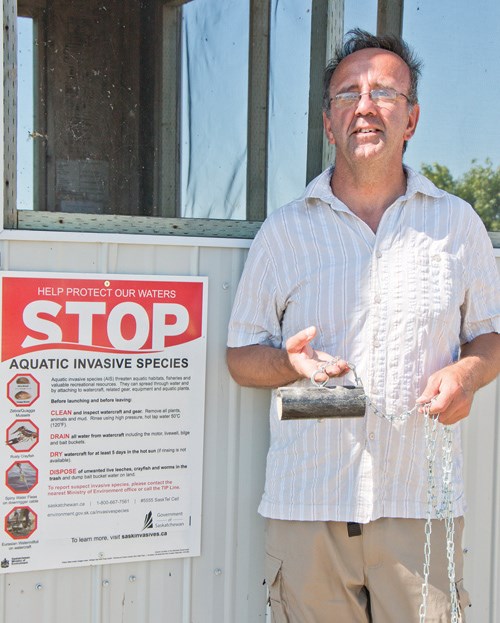Saskatchewan has numerous fresh water bodies strewn throughout the land, which provides habitats to numerous aquatic species. There is a possible threat to aquatic ecosystems, however, in the form of zebra and quagga mussels.
Native to the Baltic Sea these mussels were brought to North America by the bilge water of ships. An intrusive species in Canada, however, the mussels quickly become infestations. David Pattyson, coordinator with the Upper Souris Watershed Association, spoke to the importance of monitoring for mussels.
“Mussel infestations can change the entire ecosystem of a lake in ways we wouldn’t want to see,” Pattyson explained. “They infest fish spawning habitats and can alter the ecosystem irrevocably.”
“Recently a known infestation has come to Lake Winnipeg and through several reservoirs across the United States. They’ve been in the Great Lakes for about 20 years now and they spend millions of dollars on cleaning mussels from equipment.”
Pattyson went on to say that a mussel the size of the tip of his finger can filter up to one litre of water per day. They feed on small aquatic organisms, which fish also need to survive and therefore challenge native species for the food supply and spawning habitat.
Within the Upper Souris Watershed there are substrate samplers set up at Nickle, Rafferty, Boundary, White Bear, Kenosee Lake, and two at Alameda Dam.
“We’re working with anglers and recreational boat users to demonstrate and prevent infestations of any aquatic invasive species,” he said.
“Properly cleaning your equipment, draining and drying it is important. Anything that enters the water can possibly become infested, even just a canoe, so we’re monitoring our area. If we are diligent in educating people and watching for the first signs of mussels we can hopefully prevent the issue.”
Pattyson added that they are looking for volunteers who might be willing to check the substrate samplers in the communities, record, and report the findings to the watershed.
“At their smallest stage they’re almost invisible to the naked eye,” Pattyson explained. “They’re most likely to hitch a ride on a boat and a lot of times mussel infestations can first be seen at the boat launch docks.”
“Any equipment that has been in the water and comes out with a sandpaper feel is a good indicator or if anything that looks like a mussel is attached then that’s probably what it is. The other species we have in Saskatchewan that have a hard shell don’t attach. If people suspect these infestations call the Saskatchewan Environment’s tip line because a Conservation Officer won’t be upset if they have to come out for a false call.”
Currently Saskatchewan is free of zebra and quagga mussels, but they are easily transported.
“There was a boat caught going into an Alberta lake, which was positive for mussels, and it had come from Ontario,” Pattyson stated. “They can survive in standing water beyond 30 days, so it’s important to properly clean your equipment.”
Pattyson and co-workers were out during the Alameda Fishing Derby where they educated boaters on ways to stop aquatic invasive species.
“It’s been really good because we’ve informed about 100 boats today and prior to that we had educated about 130 boaters,” he explained.
So, what is proper care for ensuring aquatic species are not transferred from one body of water to another? They recommend cleaning all of the equipment including the watercraft, trailer, and all related items. Remove any visible plants, animals, and mud prior to leaving the boat launch area. Inspect drain holes, transducers, motors, propellers, as well as the trailer and vehicle. Then wash, scrub and rinse with hot tap water, but ensure you’re not near storm drains, ditches, or waterways.
Prior to leaving the boat launch area drain water from the motor, live wells, bilge, ballast tanks, etc… and then flush this with hot tap water. Leave the plugs out during transportation and storage.
Finally dry your watercraft and any equipment or gear used. Leave all compartments open to dry.




